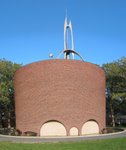This week over the Martin Luther King Holiday MIT hosted the Religion and Violence seminar from the Trinity Institute in New York City. Sponsored by the Technology and Culture Forum, the Addir Fellows and the Chaplain to the Institute, and part of the IAP schedule, the program registered over 65 people and included a stellar group of speakers, small groups and lots of good conversation.
For me it was a good way to reengage MIT. I had spent the week in Guatemala a few hours from Guatemala City at a health clinic with a group of doctors doing surgery. Those served were often from local communities scheduled as a result of diagnosis at the regular mobil health clinics. Over 70 individuals were seen and there were 93 surgical procedures performed. Patients ranged from children to very elderly men and women. For many the clinic provides the only medical and dental care available.
The motivation behind the clinic and the work being done very day of the week, is that it is the responsibility of Christians to live up to the best intent of their religious convictions, i.e. to love others asas they have been loved and as they love themselves. Nothing more and nothing less. The group was quietly ecumenical, drawing on Christian communities across the Protestant and Catholic spectrum. It looked a lot like MIT.
At the same time 7 students from MIT were in the Middle East encouraging Muslim students to come to the US to continue their education. Apart from some difficulty getting into Israel, the group had little trouble. In Jerusalem 250 students attended the session with the MIT students.
From Beruit one guidance counselor wrote: "Getting students to apply to the US is always a challenge. Getting those who can to apply to MIT is even a greater challenge. When you are at the top, realistic applicants tend to shy away, or at least my kids. Of course you always have the unrealistic applicants who are ready to apply regardless. I work hard to screen. So your initiative is very helpful as is all face to face contact."
The religious communities at MIT are all active during IAP in many ways. It is a vibrant and living community expressed in many forms. To be involved is to be blessed and to see beyond this corner of the world to what students often call "the real world". The surprise is that many find that what is real often looks a lot like the MIT they know and love. That is the way it should be.
One more week of IAP and then a new term begins.
Robert M. Randolph
Chaplain to the Institute
News from MIT's Chaplain to the Institute
